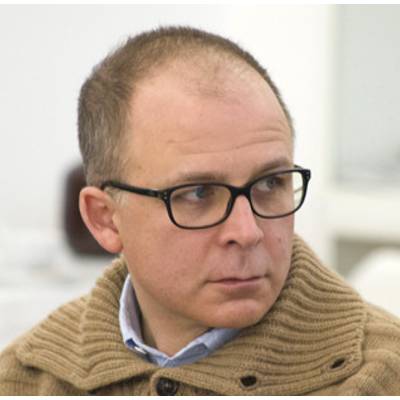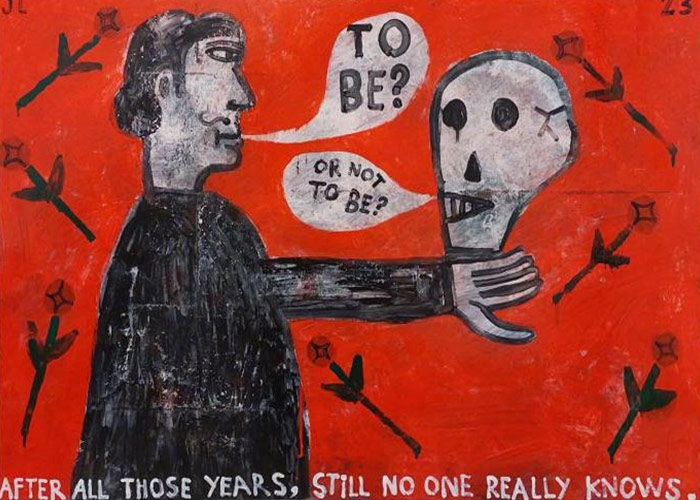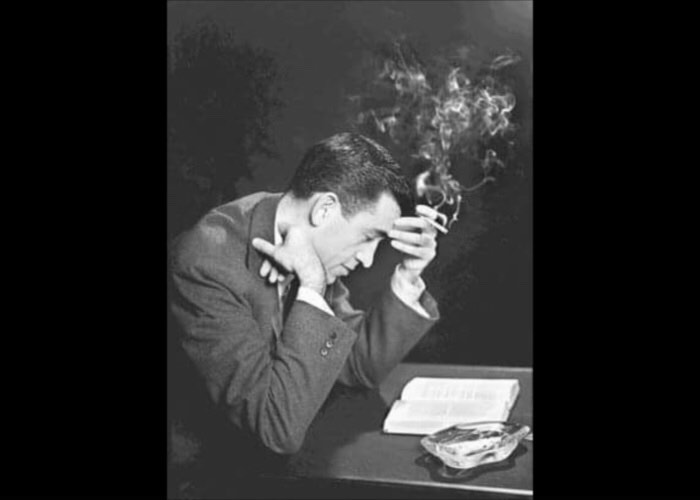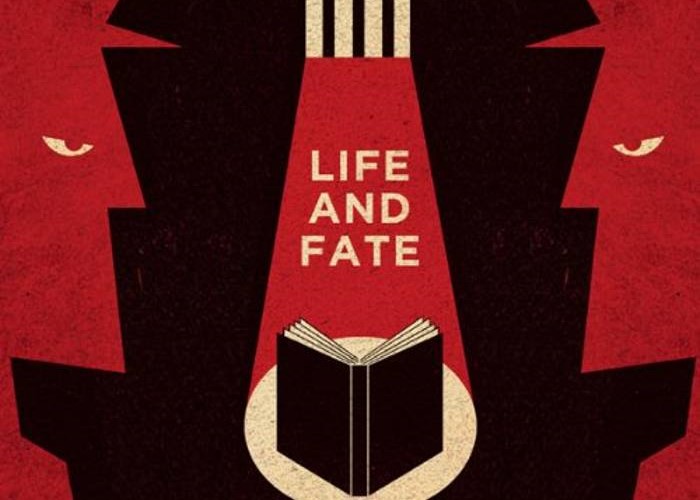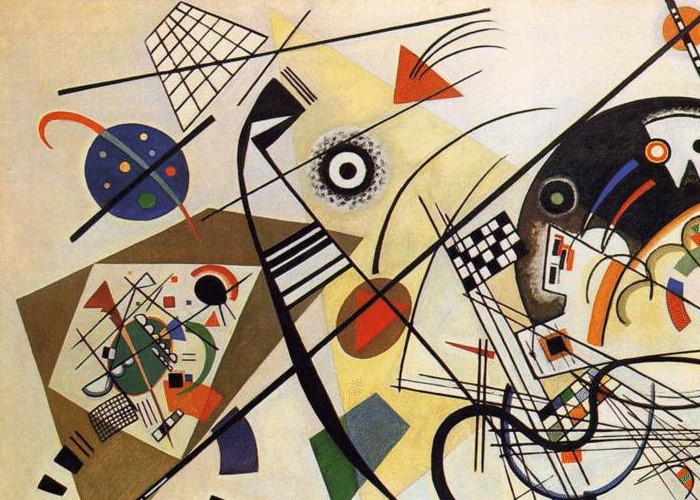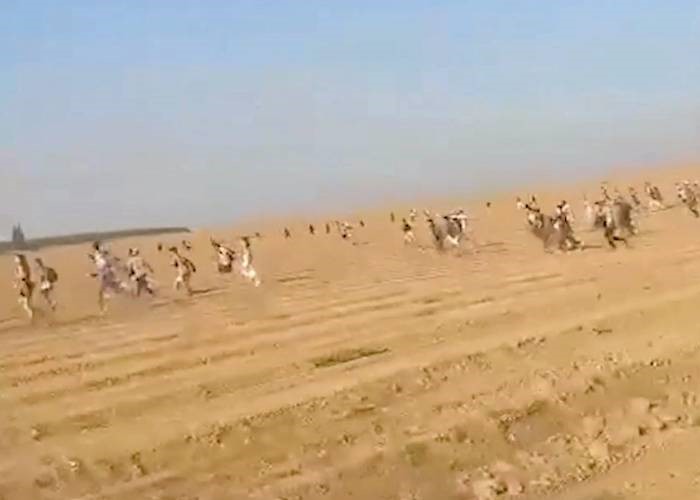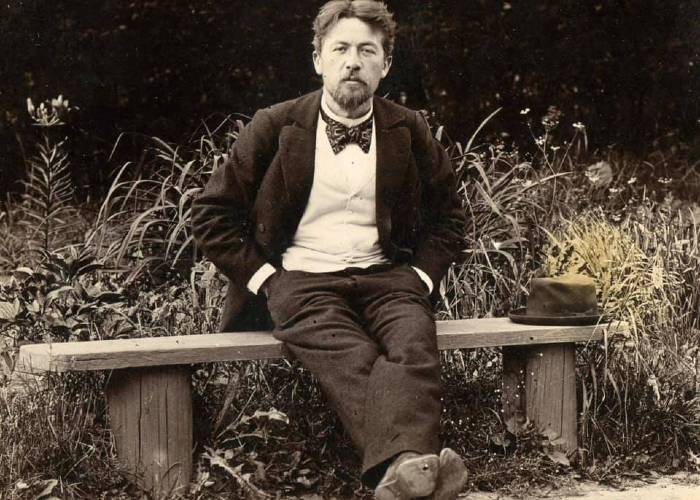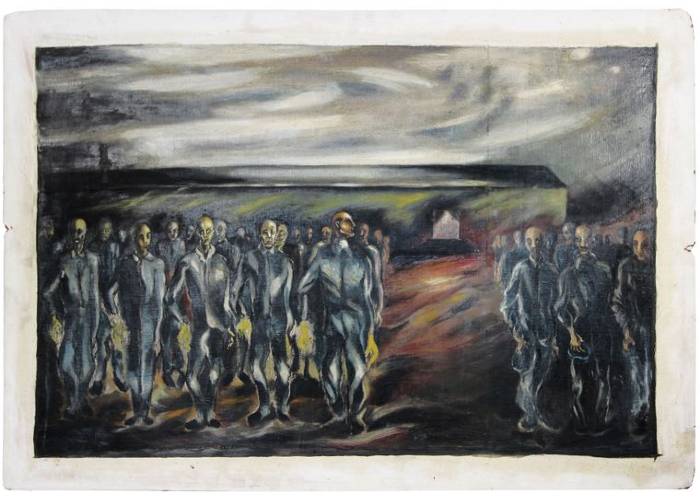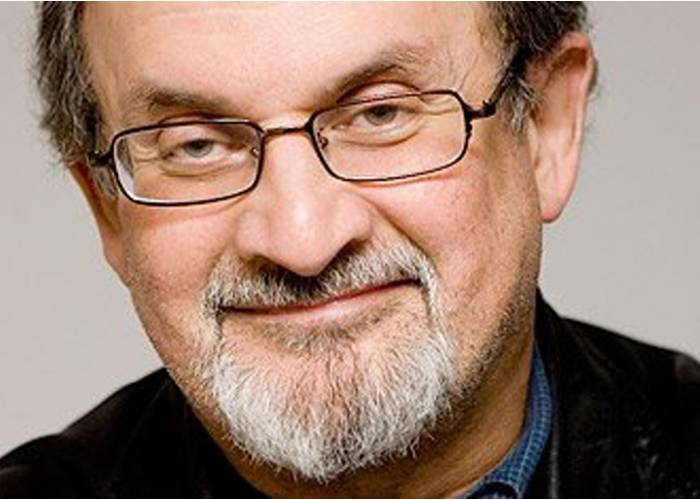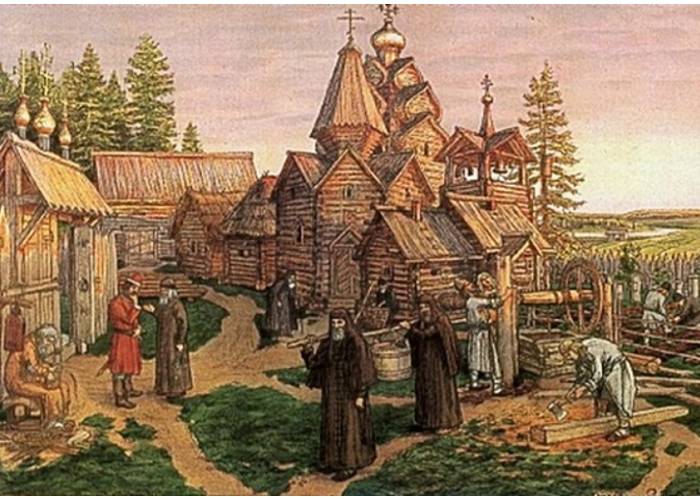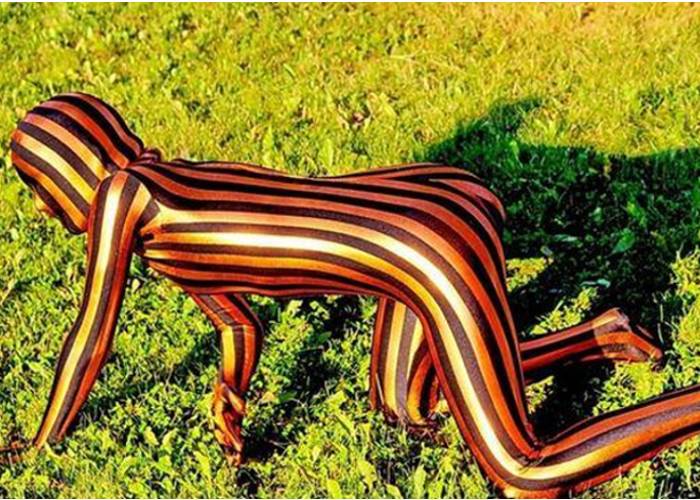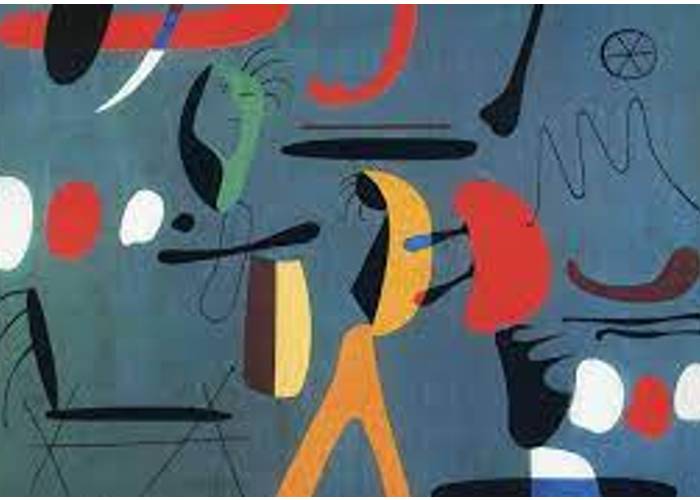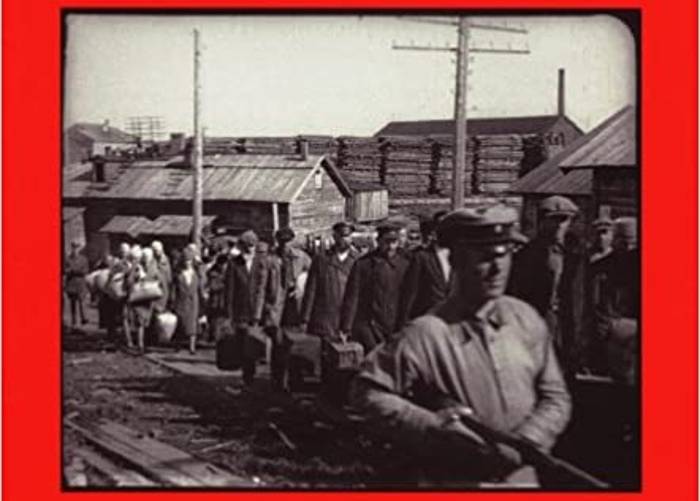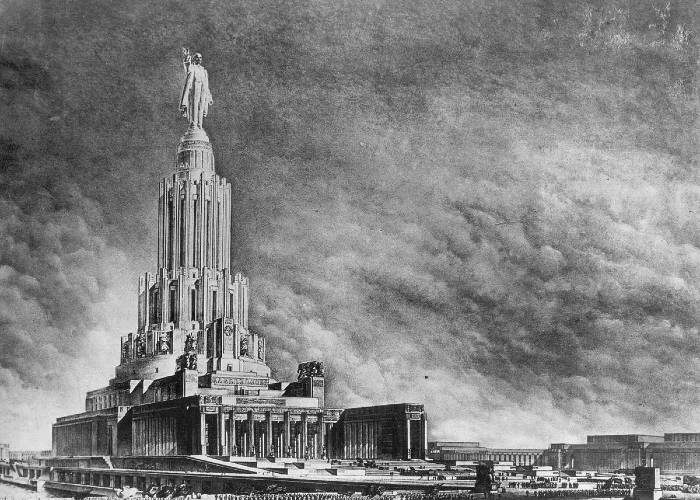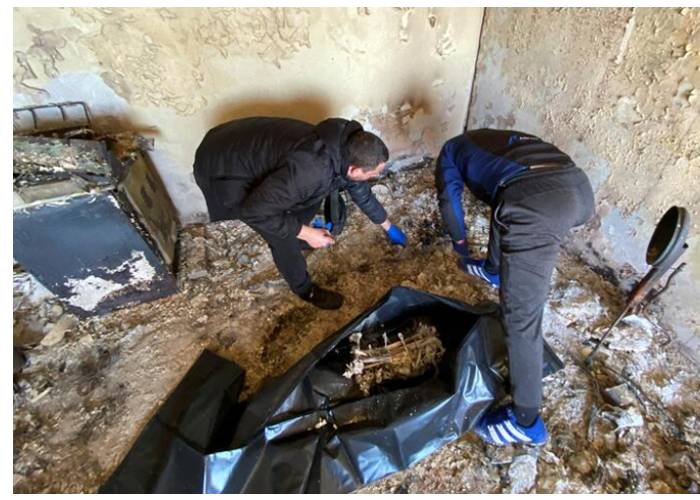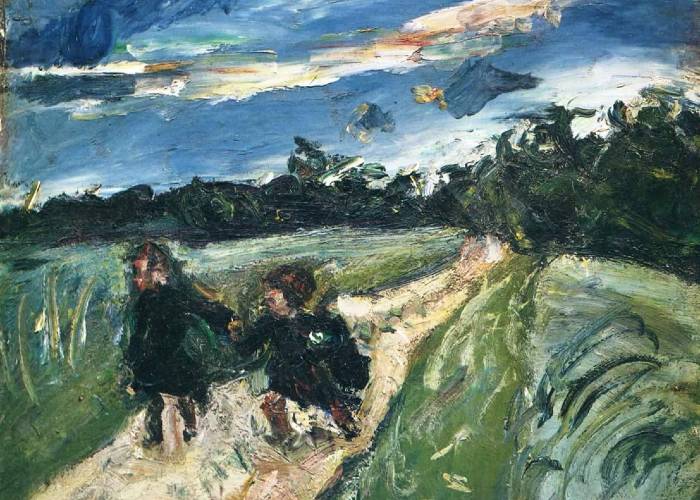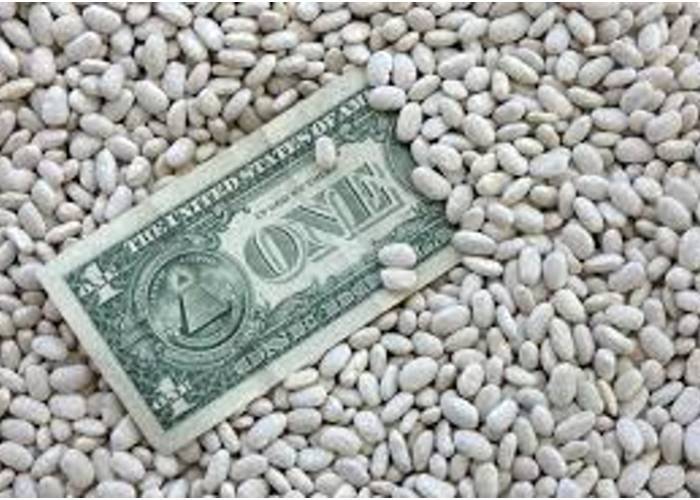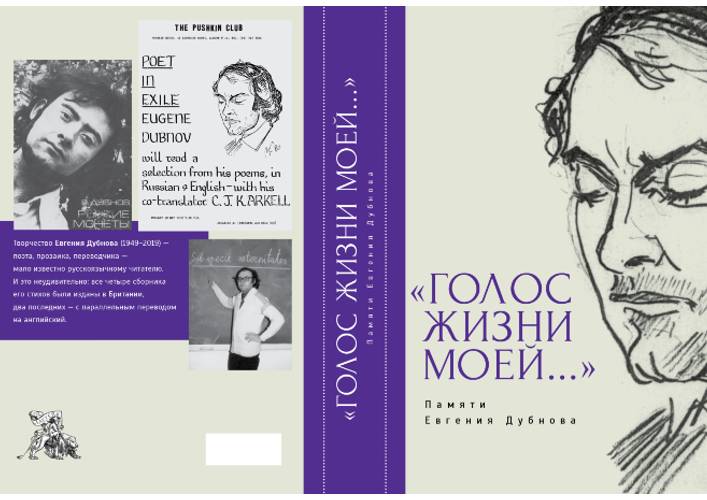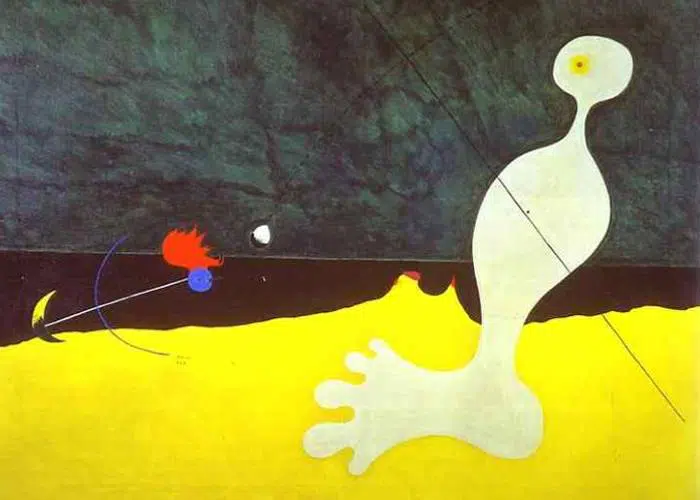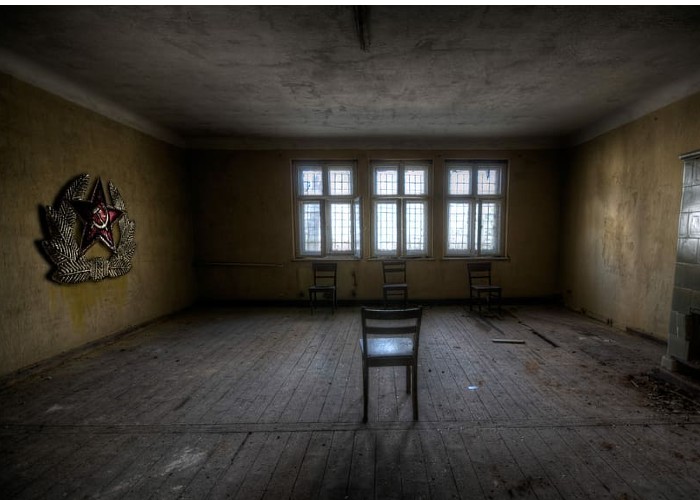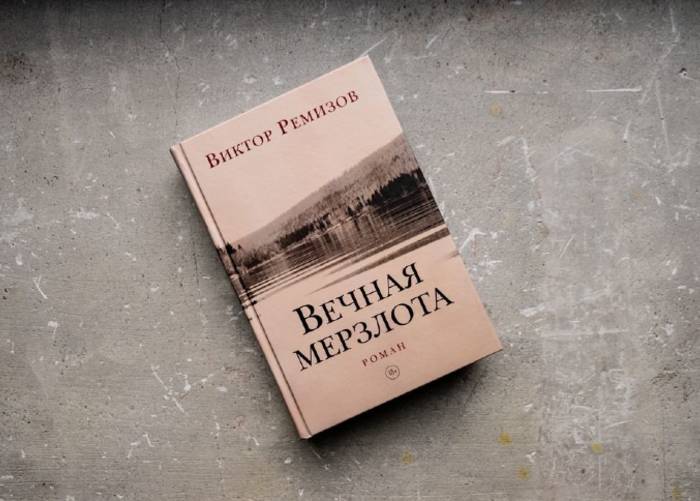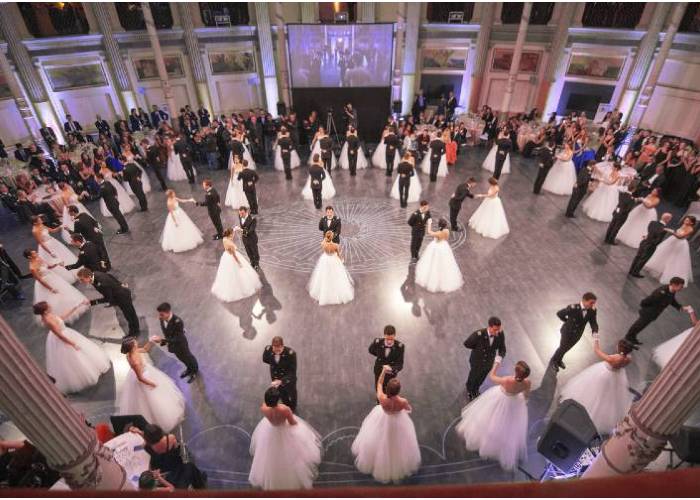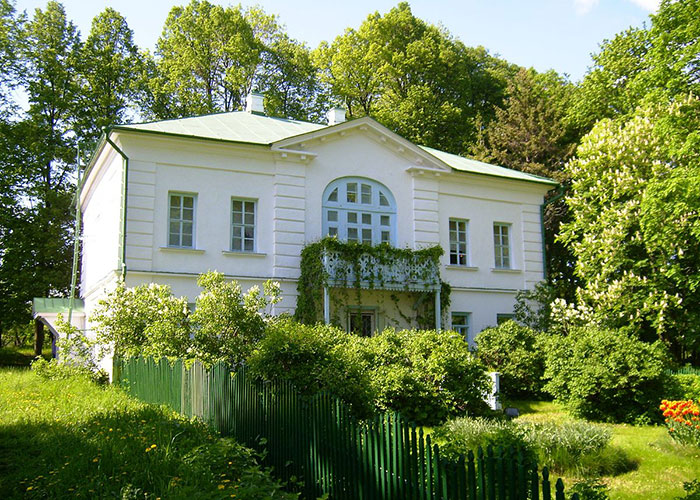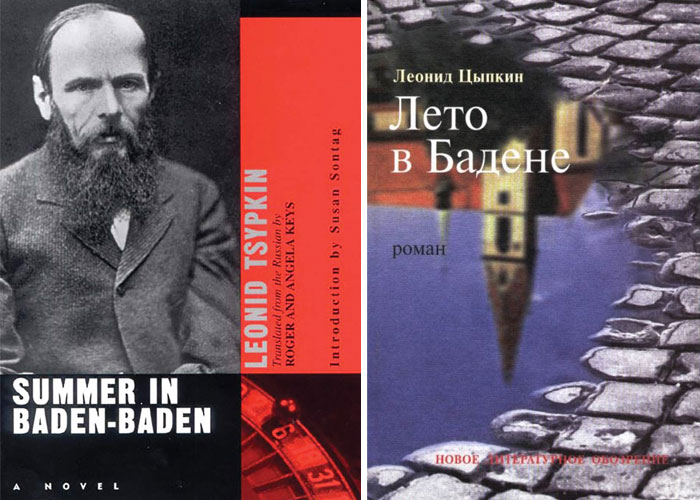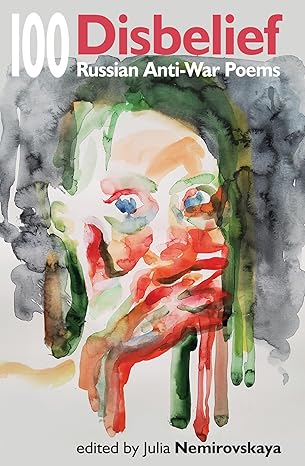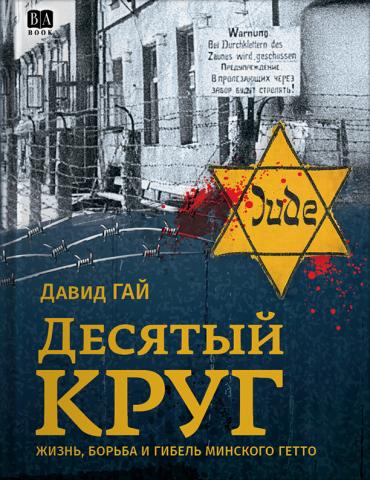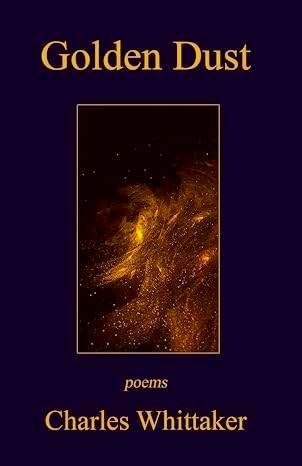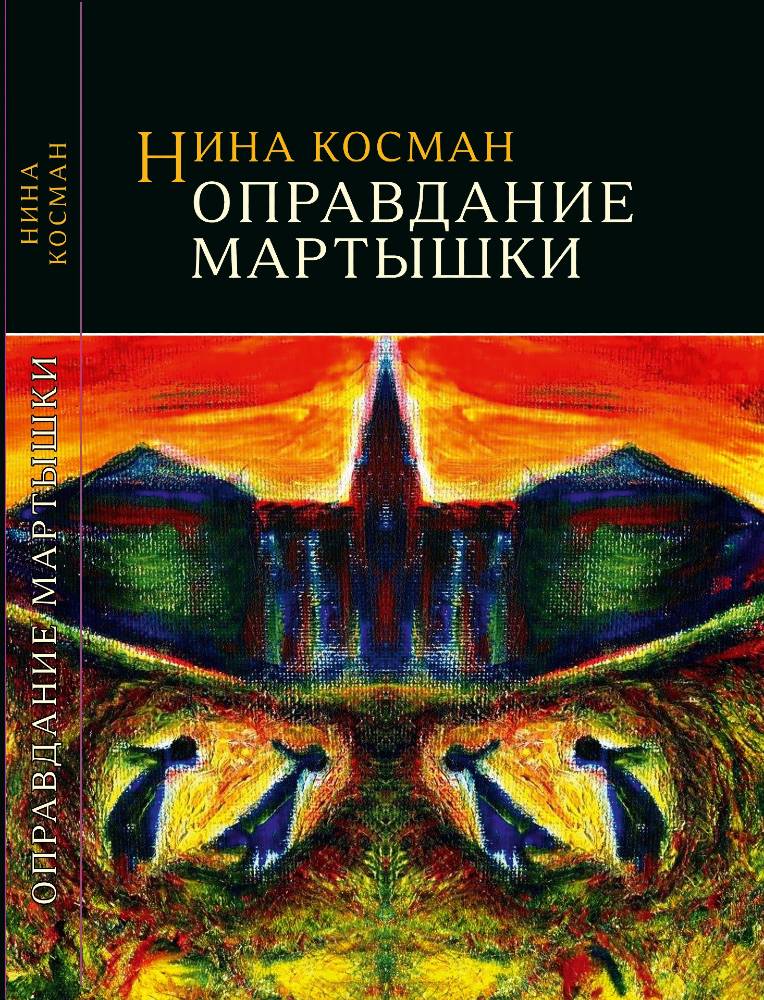This title came to me at lunchtime on Saturday, 4 August 2007, as I was just finishing a cabbage roll and sipping green tea from a plastic cup. The concrete floor of the cafeteria was worn and cracked, but not noticeably filthy. The mirrored walls were decorated with plastic orchids and reflected shoppers in the Syktyvkar department store, in the city with the same name. Syktyvkar? I suspect very few who see these words in print will know exactly where to look for it. It is the capital of the Republic of Komi, which is almost as big as France.
I sometimes use phrases that come to me out of nowhere as titles for curatorial projects. Trying to understand something I have heard myself think becomes a way to sift through fuzzy meanings and articulate them. At first they make sense only on an infra-intellectual level.1 Had I been able to define the Continental Unconscious immediately, I might not have chosen it to describe the exhibition I am putting together for the Art Museum of Estonia.
The topic is contemporary art and culture in the Republics of Mordvinia, Udmurtia, Mari El and Komi. These are homelands for nations related to the Finns and Estonians and are dispersed across north eastern Russia. Westerners tend to be unaware of their existence, and some people even assume that I have made up the foreign-sounding names. The Estonians, however, try not to lose track of their distant cousins. They keep reminding Europe of threats to their survival, give scholarships to their students, organize ethnographic expeditions and cultural festivals.
Yet when I first suggested the idea of a contemporary art exhibition about the “Finno-Ugrian World,” my Estonian colleagues were appalled. Why spend time in those remote places, which even specialists describe as “the periphery of the periphery”? Why stir up ethnocentric sentiments among the Estonians? Why revive an agenda of cultural cooperation from the dark Soviet seventies, when Estonian intellectuals became infatuated with Finno-Ugrian mythology and bonded with their faraway kin?
I admit that I find the very obscurity of the project attractive, but my interest is not limited to discovering new destinations and filling in some of the last blank spots on the curatorial world map. For more than twenty years I have wanted to travel north by northeast and visit these places that are unknown but not exotic.
This wish was installed in me in July 1986, when I was learning the basics of Finnish grammar at the University of Turku. On a secretary’s pin board I noticed a little cartoon torn out of a newspaper printed on coarse paper: two cavemen in shaggy hides, arguing with big gestures around a camp fire. An incomprehensible caption in Cyrillic with an abundance of exclamation points was accompanied by a marginal note in pencil: “World Congress of Finno-Ugristics. Syktyvkar, 1985.”
Last year I finally had the opportunity to visit all four republics, with travel money provided by the EU. Now, with a couple of months to go before the exhibition opens in Tallinn’s ultra-modern Kumu Art Museum, I am beginning to understand what the Continental Unconscious might mean. I see it as a productive metaphor that I can apply to a field I am simultaneously discovering and creating.
“Field” is of course another metaphor, as is “land”, “territory” and “province,” to mention only a few of the spatial expressions that are unavoidable in any text about the life of nations. The Finno-Ugrian geography involves impressive distances, justifying the addition of “continent” to the list.
The “unconscious” is always trickier to justify, since we cannot prevent each other from filling this negative and empty notion with specific meaning. Like other theorists of the unconscious, Freud was aware of the dilemma. He elaborated three complementary points of view to describe and explain the unconscious: “I propose that when we have succeeded in describing a psychical process in its dynamic, topographical and economic aspects, we should speak of it as a metapsychological presentation.” 2
Freud’s topographical point of view stems from many fruitless attempts to locate consciousness at particular junctures in the human organism. I am not the first to invert this reasoning and propose that land, territory, and continent have a consciousness of their own, which may or may not manifest itself in the humans who populate them. Man becoming one with the horizon, reaching into the underworld and the world above, turning the dark innards of the Earth into resplendent metalwork. These are ancient tropes.
Could we not also imagine an unconscious of the land, a territorial or continental unconscious, if some of the operations that work on the human mind are observed outside the individual?
Repression, Freud says, is the most important such operation. It turns certain things away from consciousness and keeps them hidden. The metaphor of repression is often applied to politics, and it might be extended to political and cultural geography. Repressed provinces, countries or continents are territories taken off the mental map. From the topographical point of view, they have become unconscious.
This project has required me to travel deep into the culturally specific. I have experienced the Mordvins, Udmurts, Mari and Komi first-hand and through reading. While they are virtually nonexistent to the outside world, and may soon become invisible even to themselves, I hope the resulting exhibition will undo some of the repression and self-repression that has pushed these peoples underground, and also illuminate possible meanings of the Continental Unconscious.
Introduction to Revolutionary Uralistics
Much like the unconscious, Eurasia is ill-defined, sprawling and menacingly mysterious. The term nowadays appears mostly in vaguely sinister contexts, in advertisements for round-table conferences with Kazakhstan’s President for Life or in reference to agents of neo-imperialist cultural politics like the Eurasian Academy of Television and Radio in Moscow. It is hardly ever a brand name that promotes a sense of fun or advertises user-friendly exoticism.
Eurasia has, however, provoked considerable linguistic and cultural interest. Most languages in Europe are related to each other and to languages in India and Iran. It is common knowledge that Finnish, Estonian and Hungarian are not Indo-European, but few non-linguists would know the other members of the language family they belong to. It is named after the not very prominent Ural Mountains in northern Russia where geographers have decided that continental Europe becomes Asia. Philological convention tells us that this Uralic family tree has two trunks, Samoyedic and Finno-Ugric, and one loosely attached thicker branch, Sami or Lapp.
The Samoyeds (this is a Russian derogatory name meaning “self-eaters”, cannibals) are divided into four nomadic or semi-nomadic tribes currently numbering 30,000 altogether. They call themselves Nenets, Enets, Selkup and Nganasan and live in north western Siberia, close to the Urals.
Of the Ugric languages, three survive. Khanty and Mansi are spoken by just 15,000 people in oil-rich western Siberia. Hungarian, on the other hand, is spoken by almost fifteen million people, which makes it the largest Finno-Ugrian language. Despite some elaborate theories, no one has been able to explain how and why this Ugric nation ended up on the Danube and in Transylvania without losing its language.
The Finnic language group is divided into four subgroups. Three of these – Permic (Komi-Zyryan, Komi-Permyak, Udmurt), Mari (Hill Mari, Meadow Mari) and Mordvin (Erzya, Moksha) – are embedded in the northeastern parts of European Russia and spoken by around three million people. Baltic Finnic (consisting of Finnish, Karelian, Vepsian, Votian, Estonian, Livonian and a few smaller intermediate dialects) is the fourth and largest subgroup. Finnish is spoken by some five million and around a million speak Estonian, while the other languages are small and dwindling.
The 85,000 Sami are divided into a number of smaller groups, each with their own language or dialect, and they are scattered over the northern parts of Norway, Sweden and Finland, and on Russia’s Kola Peninsula.
Finno-Ugristics seems to be underpinned by a slight emotional unease. As articulate, self-reflecting nations, the Finno-Ugrians are younger than their historical adversaries, who speak Germanic, Slavonic or Turkic languages. Finland’s Finnish-speaking majority has developed a language-based identity as a therapeutic strategy to heal the wounds of living in the Kingdom of Sweden for more than six centuries. Some observers, not only from Russia, accuse the Estonians of over-compensating for a long history of foreign domination by requiring too much loyalty of their Russian speaking minority. The Finno-Ugrian peoples of Russia occasionally speak of themselves as their country’s least respected national minorities.
When under pressure, the Finno-Ugrians tend to take refuge in their culture’s proximity to nature, its strong sense of continuity and privacy. Apart from the Hungarians, they have lived defensively rather than offensively. Their pent-up aggression is, more often than not, directed inwards and may turn into self-destruction or self-annihilation.
The artists’ group Archaeopteryx in Izhevsk, the capital of Udmurtia, paraphrased this tendency in a one-off project a few years ago. In local tradition, the ultimate revenge for an injustice is to hang oneself at the doorstep of the evildoer. Udmurt Hangings (2004) consisted of dummies of the artists Maxim Verevkin and Anfim Khanikov, dangling from hoardings put up in the city by an advertising company that had failed to pay them the agreed fee for their work. Quite predictably, it created a scandal, as passers-by mistook their effigies for “live” corpses.
Once in a while, some Finno-Ugrians will embark on a crusade against their perceived subordinate status. An interesting recent case is the so-called Revolution in Uralic Linguistics, started by Kalevi Wiik (Finland), Ago Künnap (Estonia) and János Pusztay (Hungary) in the early nineties, following the Soviet collapse and its thoroughgoing effects on their three countries.
The standard theory holds that Uralic languages form a family with “genetically” defined mutual relations, that an imagined proto-language existed some 8,000-4,000 years ago around the Ural Mountains and then gradually branched off into the languages existing today, and others now extinct. There is no consensus among researchers about the exact timing or geographic area. Some claim that the ancestors of today’s Finno-Ugrians have always inhabited the whole forested area of north eastern Europe and form a substratum for all other forms of human life there.
The substratum is an extraordinarily charged concept in linguistics, developed independently of psychoanalysis but in many ways reminiscent of the unconscious. The substratum is not just a layer underlying a particular language, but also the submerged, the repressed, which occasionally strikes back at the visible surface to avenge a mute population of shadows. Freud puts it well: “The content of the unconscious can be compared with an aboriginal population of the mind.”3
Some experts claim that proto-Uralic might have been created as a lingua franca, a purpose-built language meant to facilitate trade between different forest peoples who could not communicate otherwise. The streamlined grammar of the surviving Uralic languages would be a reminder of this invention.
The three revolutionaries have much more daring ideas. They see Uralic as the first language not just in all of north eastern Europe, but in north western Europe as well. They presume it to have survived the last Ice Age (23,000-19,000 years ago) in the so-called Ukrainian Refuge and to have returned to the north and west of the continent as the ice caps melted away.
Wiik, Künnap and Pusztay make room for two other refuges: one on the Iberian Peninsula (which gave rise to the Basque language) and another smaller one in the Balkans (where proto-Indo-European hibernated). Their key ideological proposal is that the ancestors of the Finno-Ugrians must have occupied “superior” parts of Europe such as the British Isles, the Low Countries or Scandinavia. The smaller size of the Indo-European refuge is also a soothing retroactive correction of contemporary realities.
But the authors of this admirably speculative theory, which has been decried by all “scientific” Uralists, go even further. They abandon the genetic (continuous)model for explaining inter-language relations and return to the less fashionable Sprachbund (contiguous) model that operates with physical proximity and language shift (exchange of languages between populations) as parameters.
And why not? The hard evidence that would prove or disprove any theory about the origin of language is preserved somewhere in the unrecorded past, and we cannot unveil it until we discover hidden powers of diachronic mind-reading. What a pity that the revolutionary Uralists have bared themselves to devastating critical enquiry into its use of printed sources! They have failed to clothe their own unconscious in the appropriate scientific garb. play the game of their critics rather than substantiating the merits of speculative thought. On the level of explaining existing phenomena their theory is also sometimes overly complicated. See for example this extract from Ago Künnap:
I will try to range [sic] the order of the supposed language shifts in the Uralic language group. 1) First of all the Lapps took over the Finnic language form. 2) The Mordvins took over the Mansi language or primarily spoke Mansi. 3) (Part of ) the Samoyeds took over the Ugric language form. 4) The Mansi speaking Mordvins and (Ugric-speaking?) Samoyeds took over the Finnic-Lapp language form. The Lapps may have preserved some substratum from some other (Basque type?) language, the Ugrians – some substratum from a Paleosiberian type (from the Samoyeds?), the Samoyeds – some substratum from a Paleosiberian (partly also Ugric?) type, the Mordvins – some substratum from an Ugric (Mansi?) type of language.4
Unconscious or semi-conscious desires may infect even the vastest of continents. The nations who populate them all have their own claims to greatness, which often involve showing bullying or uppity foes their right place. Linguistics, ethnology, archaeology, history and other humanitarian disciplines are often, much more often than is usually acknowledged, driven by unexamined collective emotion: pride and resentment, anticipation and disappointment. Cultures and nations that are uneasy about their own status are even more likely than others to illustrate these tendencies.
The Strange Birth of Russia
Despite all its epic history of suffering at the hands of home grown and foreign tyrants, Russia is a young nation, not much more than a thousand years old. Despite its desire to awaken the fears of its smaller neighbours and global competitors, Russia is insecure and has repeatedly faced serious threats to its own existence.
The best way to understand Russia, I have always thought, is to see it through the eyes of its non-Russian subjects with their alternative histories: invasion and expulsion, defiance and submission, collaboration and obstruction, repression and self repression. These “strange-born” peoples (inorodtsy in Russian, a pre-revolutionary term which is no longer politically correct) continue to add their own semantics to the semiotic superstructure of the Russian state, which is still under construction.
The ethno-linguistic makeup of today’s Russia, like that of all other European countries, is a result of population shifts that started during the Dark Ages, the largely unscripted centuries after the collapse of the unified Roman Empire. The eastward expansion of Slavonic-speakers is believed to have started in the fifth century from an indistinctly defined area of central Europe. Some researchers have located it in the Byelorussian marshlands now depopulated because of the Chernobyl nuclear disaster.
Migratory Slavonic tribes eventually imposed their language on Baltic and Finno- Ugrian populations in the forested lands to the east and northeast. The Yatvingians and Galindians, the Merya, Muroma and other tribes whose names are now forgotten soon found themselves exiled into the substratum of the modern Russian language. Russia is continuously subverted by otherness and diversity. In this supposedly centralised empire we hardly find a single region or district that is culturally fully homogenous, nor many figures of importance without some non-Russian “blood”.
Lenin was from Simbirsk on the Volga and counted Kalmyks among his ancestors. The Kalmyk, “those who were left behind” are a Mongol people who settled on the steppes of southern Russia. Stalin was from Georgia and half-Ossetian. The Ossetians, a northern Persian people, boast the largest number of “Heroes of the Soviet Union” (an honorary title for distinguished soldiers in the Second World War) in relation to population size. Vladimir Putin, the current Leader whose air-brushed photograph is on sale in bookshops across Russia, claims that his family were originally Vepsians, a Baltic Finnic people of some 8,000 souls who do not have a literary language or even an officially sanctioned orthography.
Czarist Russia offered no official support for its non-Russian minorities. At best, they were left to their own devices. They featured prominently in the many peasant uprisings of the seventeenth and eighteenth centuries. While a minimum of learning might have been brought to them by Orthodox missionaries, Christianity was never convincingly implanted among the Mordvins, Mari and Udmurts, who still see themselves as Europe’s last pagans.
The revolution in February 1917 unleashed an unprecedented wave of political activism among the Empire’s smaller nationalities. The majority of the Finno-Ugrian peasant population supported the Socialist Revolutionaries, who pushed for radical land reform. Yet enthusiasm for political innovation did not die down after the Bolshevik takeover and regional communist rulers secured a degree of autonomy for themselves after the civil war and famine of the early 1920s.
Stalin, who at this time was People’s Commissar of Nationalities, launched a program of post-revolutionary nation building for the non-Russian peoples, including the policy of korennizatsiya (“rooting”) to foster indigenous administrative and cultural elites. In the thirties, when he had secured his grip on centralized power, he brusquely reversed these priorities.
Nevertheless, a system of national homelands was gradually put in place. Internal migration, intermarriage, and the decline of school teaching in languages other than Russian led to far-reaching assimilation of the Finno-Ugrians in the 1960s and 1970s, and they eventually became minorities in their own Autonomous Soviet Socialist Republics. There were twenty of these when the Soviet Union collapsed in 1991, and most of them are now constituent parts of the officially “multi-national and multi-cultural” Russian Federation.
Their status remains ambiguous. They are sovereign on paper, but not even semi-independent in practice. They have their own capitals, flags, anthems, airlines, television stations and high commissions in Moscow, but usually very little control of their natural resources. Until recently they elected their own presidents and parliaments, but they are subordinated to the governors of the seven “super-regions”, appointed by the Russian president. The Finno-Ugrian republics in particular lead anonymous political lives.
In preparation for the exhibition in Tallinn I have visited these four republics several times. Foreigners are allowed to travel in Putin’s Russia, provided that they continuously register with the local branches of the Migration Authorities. A working knowledge of Russian is necessary, since very few people outside Moscow and St Petersburg speak English or any other western language. If you meet these conditions you are, in principle, free to make contact with most of those active in contemporary culture and gather the intelligence you need.
Mordvinia
I arrived in Saransk at half past three in the morning on 14 July 2007, after six hours of immobile confinement in a small and rickety plane belonging to Mordvinian Airlines – apparently always the last in line to take off from Moscow’s Domodedovo Airport. I later learned that flying to Saransk is pointless anyway, since the Mordvinian sleeper train is new and comfortable and the distance from the Capital is only 600 kilometers.
This proximity to Muscovy has thwarted the project of strengthening and developing Mordvin identity, self-esteem and cultural unity. Russian leaders, whether czars, commissars, or oligarchs, have always been wary of these particular inorodtsy, who number more than a million and are somehow too close for comfort.
The Russians’ name for this nation (Mordvá) includes the collective suffix -vá, which they tend to use only for geographical entities that concern them intimately: Moscow (Moskvá), Lithuania (Litvá), Tartary (Tatarvá). The root mord-, probably of Iranian-Scythian origin, means “man”. It reappears in the indigenous names for the Mari (whom pre-revolutionary Russia called “Cheremis”) and the Udmurts (previously “Votyaks”). In the Komi-Zyryan language, mort also means “man”.
Yet the Mordvins hesitate to see themselves as one community. Alexander Begovatkin is a learned archaeologist and historian and Deputy Director of the Regional History Museum in Saransk, with over 300,000 objects in storage. He tells me that his once belligerent nation has occupied the wooded flatlands on the right bank of the Volga, and originally also the areas to the northwest, at least since the third century when they paid tribute to the Ostrogoths. Several Viking burials sites have been excavated here. There were originally thirteen Mordvinian subgroups with their own dialects. Many of these remain patchily researched to this day.
At some point in the early Middle Ages, around 1100 when contacts between the Mordvins and the Russians were already established, two main ethno-linguistic groups had emerged, the Moksha and the Erzya. Their languages are closely related, but not mutually understandable without effort. The Mordvins themselves even reject the idea of the unified nation (some Erzya consider themselves more “European” than the Moksha) but the Russians, ever suspicious of people whose languages are a mystery to them, have a saying: U Mordvy dve mordy, a shkura odna (“The Mordvin has two snouts, but only one skin”).
I am told this by the poet and singer-songwriter Alexander Arapov, the editor-in-chief of the official Erzya-language literary journal Syatko (“Spark”) who has dedicated his life to creating and promoting literature in his sonorous mother tongue but whose children speak only Russian. He agrees that the language ecology of Mordvinia, the survival or death or possible unification of the two languages, is ultimately the responsibility of their speakers and can never be fully policed by the authorities in Saransk or Moscow.
In theory, street names in Saransk should be given in three languages, but I could only spot three or four such signs. Inside the newly built Mordvinian National Theatre, where productions are in either Erzya or Moksha, all signage is in Russian, which is also the language the staff uses among themselves.
In Russia the age-old dysfunctional relation between country and city was allowed to deteriorate beyond repair during seven Soviet decades of rushed industrialisation and brutally imposed collective farming. It has become almost impossible to maintain linguistic diversity among the newly urbanised populations in the national republics. The prestige of languages other than Russian is so low that there is little incentive for the new generations in the post-Soviet towns and cities to learn them.
The Republic of Mordvinia contains only a small part of the Erzyas and Mokshas, many of whom live in small communities in the neighboring regions and even beyond the Urals. In Russian collective consciousness, Mordvinia is associated with the Gulag. There are still many prison camps in the republic. On a similar but more positive note, Saransk is known as the city where the legendary Russian literary scholar Mikhail Bakhtin (1895-1975), theorist of the “dialogical” and the “carnivalesque”, spent long years of internal exile. The Mordvinian State University still employs some of the specialists he trained in the 1960s.
In Putin’s prosperous, post-democratic Russia it is not surprising that Mordvinia, which already in the turbulent 1990s counted as the least assertive of the national republics, tries to exploit its proximity to Moscow and win favors from central government. This was always the way to do provincial politics in Russia. In mid-July Saransk organized Shumbrat Finno-Ugriya! (“Hail, Finno-Ugrians!”), a megalomaniacal official festival “for the whole family” (i.e. populist and about nothing; carnivalesque, but hardly dialogical), which was originally supposed to gather representatives of all the Finno-Ugrian nations and countries.
Putin flew in for an informal meeting with the Finnish President Tarja Halonen and the Hungarian Prime Minister Ferenc Gyurcsány. In April and May Russia had stirred up a violent response to the Estonian government’s decision to move a Soviet-era monument to the Unknown Soldier from the centre of Tallinn, and even launched a large-scale cyber-attack on vital internet servers in Estonia. It appears that Russia wanted to test whether the EU and NATO would stand by its new members in a situation of crisis. The Estonians received some support after initial hesitance, but their President Toomas Hendrik Ilves was not invited to the festival, which is why Saransk had a brief moment of fame, at least in Estonia and Finland.
In the aftermath, when the customary media silence resumed, the outspoken oppositional newspaper Erzyan Mastor (“The Erzya Land”) was closed by the authorities for criticising the expense lavished on the event.
My main reason for going to Saransk was the Stepan Erzya Museum. I want to dedicate part of the exhibition in Tallinn to individuals who have emerged from the Finno- Ugrian nations and made a name for themselves in the arts or in learning.
Stepan Nefyodov-Erzya (1876-1959) was of humble origin, born in a Mordvinian village, but became one of the subtlest and most advanced Russian sculptors of the pre-revolutionary generation. In social status, outlook and education Erzya was similar to his Romanian colleague Constantin Brancusi. He worked in Italy and France before the First World War, but his pseudonym indicates that he was not indifferent to ethnicity. This was the period of national romanticism.
In 1914, he returned to Russia and was kept there by war and revolution. He never abandoned his refined impressionist approach to sculpture, but fine-tuned it to suit the more decorative and monumental requirements of the inter-war period. In the early twenties Erzya worked in the Urals and the Caucasus. He took commissions from the Soviet authorities and planned gigantic sculptural undertakings, turning entire mountains into monuments. These projects were not realized. Erzya did not adapt his style to fit either modernist or socialist realist tendencies in Soviet art.
In 1926, before Stalin had secured his grip on power, the government sent Erzya abroad as a “cultural ambassador”, much like the filmmaker Sergei Eisenstein. He ended up in Buenos Aires, where he soon established himself as a respected Russian eccentric. In 1934 he proposed to sculpt Rio de Janeiro’s Sugarloaf Mountain into the image of a lion. This project was also not realized. In the 1940s he made contact with the newly opened Soviet embassy in Argentina and was persuaded to return to the Motherland. After many attempts he received permission to move to Moscow in 1950, but once he was back it was of course impossible for him to leave again. The borders were hermetically closed and life in Stalin’s USSR was harsh, especially for a “bourgeois formalist” artist who had lived abroad for twenty-four years. His lame attempts at socialist realism can be studied in the Stepan Erzya Museum in Saransk, where most of his surviving works are kept.
In Argentina he had discovered quebracho, a local hardwood, and many of the pieces on display in Saransk make use of the contrast between sculpted and polished surfaces (mostly faces of young female models) and expressive swaths of untreated wood. I like to think of these rough areas, left outside the artist’s active control but contained within the carefully calibrated whole of the sculpted image, as a metaphor of the unconscious, a treacherous “substance” into which we probe at our own risk.
Udmurtia
My next destination was the village of Zhozlud-Kaksya in the district of Vavozh in western Udmurtia. I went there together with a handful of artists I had invited to the exhibition in Tallinn as outside commentators: Sándor Bodó from Hungary, Mark Raidpere from Estonia, Nina Roos from Finland and Darius Ziura from Lithuania.
We participated in the “ethno-futurist” art workshop Ser No Tur (“Sharp, FastMovement”) organised by the Udmurt artists Yuri Lobanov-Kuchiran, a printmaker, graphic designer and performance artist, and Sergei Orlov, a painter. This was one in a series of events continuing the Soviet tradition of the artists’ summer camp or plein air. It gathered artists and art historians from the so-called “Finno-Ugrian World” in the recently built school of the ethnically Udmurt village, whose dirt roads, log cabins and utility stores looked almost exactly like those in the photographs by Darius Ziura that illustrate this essay.
At first, collective life in the school with shared dormitories and washrooms and canteen meals at fixed hours was exotic to us foreigners, a flashback to school and military service, but after half a day we had completely adapted to a life without individual logistical initiative. A calligraphic banner in one of the classrooms proclaimed: “How nice that we have all gathered here, together!” Traditional Russian collectivism is both cheerful and intrusive.
No one has been able to tell me exactly what ethno-futurism is, but it has very little to do with futurism as we know it from art history. The term was coined around 1990 and originally applied to a regionalist poetry movement in eastern Estonia. It spread through the Finno-Ugrian cultural networks that had been set up in the last years of the Soviet perestroika, with cultural festivals and gatherings of democratically minded dissidents in the Finno-Ugrian republics. Since the mid-1990s it has been used mainly in the visual art circles of their capitals, and in even more remote locations such as Khanty-Mansiysk, capital of the Khanty-Mansi Autonomous District. Ethno-futurism has also caught the attention of Turkic-speaking Tartar, Bashkir and Chuvash artists, but the movement does not seem to have many followers beyond the Volga basin.
From what I have seen, I would characterize ethno-futurism as an updated visualization of Finno-Ugrian tradition in established art formats and techniques. The ethno-futurists draw their inspiration from mythology, folklore and coded representational systems such as folk embroidery or prehistoric art. They are especially influenced by metal artefacts from the seventh century BC to the tenth century AD in the so-called Perm Animal Style, crafted by the ancestors of today’s Udmurts and Komi. With very few exceptions, artists in the Finno-Ugrian republics stay away from politics or social commentary, unless we consider the formal repertoires of ethnic revival political in themselves. Artists have a very weak position in these societies, where there is no contemporary art context, very little public tolerance for formal experiments, and none at all for unauthorized political messages.
The single most intriguing activity in Zhozlud-Kaksya – and perhaps during the whole expedition – was the two-day introduction to Holotropic Breathwork conducted by Sergei Orlov. This technique of controlled hyperventilation is an adaptation of yogic breathing practices developed in California in the 1960s by Czech-born psychotherapist Stanislav Grof as an auxiliary to his controversial LSD therapy.
Orlov had become acquainted with it at a workshop in Novosibirsk. That city’s Akademgorodok (“Academy Town”), once a refuge for elite Soviet researchers, now also seems to accommodate speculative, occult learning that draws on the association with Academia to enhance its prestige. Mentioning “our scientists” is always a valid selling argument in post-Soviet Russia, almost as persuasive as hushed references to “secret laboratories” run by “certain services” somewhere “on the outskirts of Moscow”.
Orlov hinted at all these subterraneous connections when he introduced his subject to us, to put himself and us in the right conspiratorial mood. He was pre-conditioning us, setting us up for the transpersonal semantic field we were about to enter. We would ascend through various layers of consciousness, which he described in some detail, and would eventually travel freely outside our bodies, equipped with enhanced inner vision but shielded from hearing anything save for the cosmic resonance of collective prayer…
Stanislav Grof has been credited with obtaining “experimental proof of the fact that the unconscious is holistic in its transpersonality.” 5 Holotropic Breathwork is a trademark, a business empire with licensed practitioners across the western world. Clearly, we were being treated to a pirated version adapted to the conditions of the Russian underground. This copy was at least as interesting as the original.
The workshop consisted of several sessions accompanied by loud Tibetan-style music and lasting an hour and fifteen minutes, a recommended length for beginners. We were instructed to lie flat on our backs and to inhale and exhale forcefully without any pauses throughout the session. We were told not to worry about dizziness, headaches, or contractions during the exercise; those were natural reactions to our steeply increased intake of air, the whole point of the exercise being to induce out-of-the-ordinary mental experiences by over-saturating the brain with oxygen. Orlov would, however, ambulate and gently reanimate us if at some point we stopped breathing.
The collective debriefing or “flight reports” after each session was a key element of the exercise. Russian-speakers are, as a rule, competent verbalizers. Yet their highly inflected language also generates an abundance of ready-made discourse that tends to privilege the literary over the intuitive. Although I personally failed to experience anything but lucid concentration on my conscious thoughts, some other participants reported remarkable inner journeys and immediately proceeded to visualize them in painting, assemblage, or textile compositions.
From our base camp in the village school we made another trip into post-Soviet collective memory, a museum dedicated to the poet, ethnologist, linguist and educator Kuzebai Gerd (1898-1937), who was born to a family of schoolteachers in the district of Vavozh. His official Russian name was Kuzma Chainikov; the pseudonym Gerd means “knot” in Udmurt.
Its bearer, who has been characterized as a one-man university of Udmurt culture, was indeed a man of many connections and entanglements 6 A cross-dressing actor, singer, and village drama coach in his earliest youth, he emerged as a revolutionary poet in the years after the revolution, adapting the exclamatory idiom of Vladimir Mayakovsky to his own Udmurt language. He was a prime example of the “rooted” intelligentsia, a new generation of minority people who would no longer suffer the old nicknames and who seem to have genuinely believed in sustainable regional self-determination under centralized state socialism.
Kuzebai Gerd returned to Udmurtia after graduating from Moscow’s Institute of the Oriental Peoples and taught at the Communist Party High School in Izhevsk. In 1930, the year of the state-induced Ukrainian famine and of Mayakovsky’s disillusioned suicide, his poetry still sounds confident and even triumphant.
Some
cried in a corner…
Some
hid in a hole…
Some
ran to the forest,
To not have to hear
how
They,
whom he thought of as friends,
Put him down
with the coarsest of words:
“Votyak!”
[…]
Stand up,
Bewinged,
Free,
Soviet,
Happy…
From now on:
Udmurt!
For ever
And ever! 7
Artlessly but truthfully the museum guide told us what happened next. Stalin no longer had any use for nationally-minded revolutionaries, who were among the first to be liquidated in the accelerating purges of the thirties. In 1932, Kuzebai Gerd was accused of belonging to the secret “Union for the Liberation of the Finnic Peoples” and of conspiring with the Finnish embassy in Moscow. After an early rehearsal of the Stalinist show-trial, these fictional crimes were punished with a lengthy prison sentence.
The poet was locked away in the notorious camp in the former monastery on Solovki Island in the White Sea. His name was erased from public discourse, his works removed from circulation and the print-runs destroyed. Family members tied the books in his private library into bundles and sank them at night through the ice on the Izhevsk Pond. Even the meagre material belongings of the repressed were contaminated with danger.
In 1937, when the Great Terror peaked, Kuzebai Gerd was executed by gunshot as his prison was cleared for new arrivals. He was posthumously “rehabilitated” only in the late 1980s, when perestroika had trickled down to the ethnic minorities of the Soviet provinces. As part of the exhibition I am planning, the entire memorial museum in Vavozh will be transported to Tallinn, together with three museum guides.
Stalin’s reign was not the first hardship inflicted on the Udmurts. The story of a genocide in the sixteenth century has been kept alive by the population and is still told to visitors today.
Until Ivan the Terrible’s conquest of Kazan in 1552, the Udmurts were vassals and allies of the Tartar Khan; that year their contingents raided Prince Kurbsky’s troops as he marched on Tartary. In retaliation, the Muscovites captured the entire Udmurt elite – some say 3,000 people, some say 5,000 – and threatened to impale them outside Kazan’s walls unless the city was ceded without armed resistance. The War Party, which had the upper hand in Kazan at the time, refused to give in, and so the leading stratum of Udmurt society was massacred.
Kazan was sacked soon afterwards, and the Tartar Khanate was the first non- Slavonic state to be incorporated into Russia. Muscovite soldiers cut off the ears and noses of Udmurt survivors to mark them before they disbanded into the forests northeast of their capital Arsk (Archa in Udmurt). Its stately oak palisade survived until the war winter of 1943, when it was chopped down for firewood.
After the peasant uprisings in the seventeenth and eighteenth centuries, smithery was prohibited to the Udmurts and other peoples of the Volga Basin. Instead, many foundries and weapon factories were built by Russian landowners in the eighteenth and nineteenth centuries and the forests were felled to fuel them. Because of this military- industrial complex Udmurtia was “closed” throughout Soviet history. Izhevsk is famous as the home of the Kalashnikov rifle, the Izh motorcycle and other heavy-duty machinery. Foreigners could visit only after 1991.
The artist Yuri Lobanov-Kuchiran, creator of the Udmurt flag and coat of arms, immediately accepted the Continental Unconscious as a meaningful notion and already uses it in conversation as if it were an established term. A keen observer of “subtle structures” in the spiritual world, he talks of territorial grief and of the traumatic memories of rape and plunder engraved into the undulating landscape of his republic. The land, he says, does not forget the injury it has suffered.
Mari El
As the commuter train from Kazan approached Yoshkar Ola (the name was invented in the revolutionary twenties and means both “Red City” and “Beautiful City”) it felt as if the locomotive was cutting its own path through the scruffy forest, like a lancet parting the tissue of a host organism to lay bare some pulsating internal organ of a different order. Mari El (the “Mari Land”) does feel special and out of the way, partly because its capital is served only by a connecting railway track, partly because it is one of Russia’s poorest and least developed regions, with few natural resources other than the trees, mushrooms and berries of the forest and sand for glassworks.
Yoshkar Ola is an unlikely candidate to be the capital of anything, particularly of a republic that includes the picturesque old merchant town of Koz’modemyansk, which sits conveniently on the right bank of the Volga. Yet access to the artery of Central Russia was for some reason considered unimportant, and this inland military outpost was chosen as the administrative centre of the Mari Autonomous Soviet Socialist Republic. For its de facto rulers, high-ranking party managers from the Central Committee of the Communist Party in Moscow, Yoshkar Ola was always a hardship posting. Disparaging the town’s enduring backwardness and obscurity, they nicknamed it Koshmar Ola (“Nightmare Ola”). Did they pause to think of their own possible contributions to this state of affairs? That is not very likely. Self-reflection and critical thinking is not part of the survival kit for imperial or totalitarian executives.
Several generations of buildings in delayed and watered-down versions of the Soviet architectural styles have done nothing to brighten up the overall impression. There is the Mari-language National Theatre, which looks like a Stalinist blueprint from the thirties but was actually put up in the early sixties. There is the Szombathely high-rise suburb, built in the eighties and named after Yoshkar Ola’s Hungarian twin city (which of course has a similar area called Yoshkar Ola).
Leonid Markelov, the current President of the Republic of Mari El, is a Russian biznesmen of rather unclear provenance whose re-election in 2004 was democratically flawed but agreeable to the powers that be. His policies constitute a sharp reversal of the nationally-minded, culturally-specific political agenda in Mari El just after the collapse of the Soviet Union.
Vladislav Zotin, its first post-Soviet President, belonged to the Hill Mari ethnic group. Among other things, he approved the official revival of the traditional Mari pagan religion now known as the National Belief or People’s Faith. There is still a kart (High Priest) who makes public appearances in a white embroidered caftan accessorized with a brimless white hat. He is considered to be a somewhat pathetic fellow traveler by the conspiratorial Mari political activists of the Mari Ushem (“Mari Council”). Whenever President Markelov falls ill, they claim that he has been subliminally affected by the concentrated power of the population’s passive-aggressive hatred of him.
It can be alarmingly difficult to distinguish between the renaissance of traditional Mari beliefs and the New Age spiritual clichés that have become a staple in post- Soviet society. I have met well-educated Mari professionals beaming with joy after visiting an excavation site at Arkaim in the southern Ural mountains, “the ancestral home of the Aryan people, and therefore also of the Mari.” In Russia, neo-paganism is not restricted to the Finno-Ugrian republics. There are also Slavonic and Turkic enthusiasts, and the boundaries separating them from other esoteric groups, such as the neo-Zoroastrians headquartered in Perm, are sometimes blurred.
A typical feature of Putin’s Russia, in addition to the aggressive presence of the official Orthodox church, is the proliferation of large, brand-new sporting facilities, marketed as gifts to the population by prominent local politicians and, lately, paid for directly by the President’s supporting party United Russia. Mari El, where salaries are almost as low as in war-torn Chechnya, has a large and opulent skating rink and an even larger and more opulent hippodrome. Tickets to these public facilities are unaffordable to most of the republic’s inhabitants.
Yet the Markelov era’s most spectacular addition to architectural heritage is the cluster of concrete and yellow brick houses in a unique neo-Venetian style that is being erected in the city centre next to the Parliament, the President’s Office, the City Council and Hotel Yoshkar Ola, all dating from the sixties and seventies. This is “Capital”, the President’s Special Construction Programme. Rumour has it that Mrs. Markelov once took a holiday in Venice, that she fell in love with the building style of the oligarchic republic and that, upon her return home, Yoshkar Ola’s chief architect was promptly sacked. The First Lady’s simulacrum shows an uncanny surface resemblance to the real thing. There is even a National Gallery of Visual Art, vaguely inspired by the Doge’s Palace, with stairs in slippery polished granite, crooked readymade plaster ornaments, intarsia parquet floors and walls painted mint green. It was inaugurated in late November and is already crumbling.
Mari El is a land charged with myth, with ancient and invented tradition, with suppressed and repressed memory that must somehow find an outlet. All four Finno- Ugrian republics in Russia display features that help me identify real-life meaning for the notion I have invented, but Mari culture in particular, has come to embody the obscurity which is a constituent part of the Continental Unconscious. In Mari El the darkness that has descended over these territories – which even minds formatted by Soviet political atheism tend to call “godforsaken” – is part of everyday life and becomes palpable even to the casual visitor.
In many ways this is paradoxical. Light, the colour white and the substance of silver are of great importance to the Mari self-image. In the traditional belief system, where celestial bodies governed life on earth, the sun was revered as Keche yumo (“Sun God”), and he was accompanied by Keche sukso (“Sun Angel”), Keche püryshö (“Decider of the Sun’s Fate”) and Keche ava yumo (“Mother of Sun God”). Geese and cattle were sacrificed to them.8 The nationalist religious sect Kugu sorta (“Big Candle”), founded in the 1770s but most active in the late nineteenth and early twentieth centuries, replaced animal sacrifice with votive candles and promoted an all-white costume of homespun linen. 9 Sun-bleached linen was already the dominant material in the traditional dress of the Mari (and, to be fair, of the Slavonic Russians). Akpatyr (“White Hero” in Tartar), the personification of national enlightenment, is based on the character of a sixteenth century Mari noble who entered the service of the Russian Tsar. He is also the main protagonist of the first Mari-language opera, which premiered in 1963. To this day, the Mari are especially fond of springs rich in the silver ions that kill all microbes and make water extraordinarily clear.
However, traditional religions also take forces of darkness and evil into account. Keremet, the main deity of the underworld and a Mari version of the Devil, was never one to be treated carelessly. 10 It has often been difficult to keep him at a safe distance.
In the fifteenth and sixteenth centuries the Mari found themselves squeezed between Tartary and Muscovy. The Hill Mari, on the right bank of the Volga, sided with Moscow, whereas the Meadow Mari, on the left bank, became allies of Kazan. After the fall of Kazan there followed a long and cruel insurgency in the Volga Basin, known as the Cheremis Wars of 1552-85. The Mari were eventually incorporated into Russia, but not quite subjugated, and they never forgot this period and its death toll. A surviving Russian expression says it all: “S odnoi storony – cheremis; s drugoi storony – beregis!” (“On the one hand, the Cheremis; on the other hand, watch out!”)
In a gesture of loyalty to Moscow that might have been ill-advised in its perverse arrogance, President Markelov recently erected a bronze equestrian statue outside Hotel Yoshkar Ola of Prince Obolensky, a Russian commander in the Cheremis Wars who would have had a hard time explaining his activities to a modern war crimes tribunal.
There is another public sculpture in the Mari capital that might be interpreted as a foreboding of disaster. On 24 June, 1936, the twenty-one-year-old parachutist Nata Babushkina came to Yoshkar Ola with an aviation show. The parachute failed, however, and she fell from the sky like a human meteorite before a shocked provincial audience. Her marble head, one of the very few monuments to a woman identified by name and profession that I have seen in Russia, is still the city’s best-loved statue.
Little more than one year later, in the autumn of 1937, the NKVD (the People’s Commissariat of Internal Affairs, a forerunner of the KGB and today’s FSB, the Federal Security Service) rounded up most of the intellectuals responsible for the flourishing of Mari-language culture in the 1920s and early 1930s: writers and painters, scholars, teachers and doctors, the entire troop of the National Theatre; they numbered several thousand people altogether. Some stood accused of conspiring to dig a tunnel all the way to Finland. A mass grave of some 200 Mari writers, all shot on the same day in early November 1937, was dug up outside Yoshkar Ola during the Perestroika and the victims were reburied in 1990. There was nothing unique about such cleansing actions in the terrible year of 1937, but this unkindly gesture by the Great Leader and Teacher (one of Stalin’s favorite epithets) hit the Mari people especially hard.
On a gloomy winter day in today’s Yoshkar Ola, still dominated by Stalin-era architecture and with few signs of capitalist globalization, it is almost possible to imagine the profundity of the fear after these massacres, which of course had to be instantly forgotten and cheerfully ignored by the survivors.
The Soviet Union engaged in large-scale production of literature for small peoples. The Maxim Gorky Literary Institute in Moscow, founded in 1933 at Gorky’s own initiative, continues to educate novelists, poets and critics who write in Russian or other languages of the Federation. Among its many students was Valentin Kolumb (1935-74), the most promising Mari poet of his generation. He had grown up during the darkest years of the NKVD massacres and the Second World War, which claimed victims from every single village of the immense empire, including the Finno-Ugrian republics which were never under German occupation. His father was jailed by Stalin in the thirties and then killed in battle in 1943.
Valentin Kolumb developed into a prolific and accomplished poet. In many ways, he was a typical propagandist for the more nuanced optimism that replaced the mandatory tropes of Stalinism under Khrushchev’s rule in the early 1960s. Most literature from this period now comes across as ideologically clumsy and almost unforgivably naïve. Yet the collected poems of Valentin Kolumb, who wrote only in Mari although he knew Russian well, are now being re-published in Yoshkar Ola together with his Mari translations of classics like Shakespeare and Goethe or the Finnish Kalevala.
In the early 1960s, Kolumb was a celebrated figure, publishing his poetry and working as a radio journalist and editor-in-chief of the Mari literary publishing house. Around 1966, attitudes towards him changed and his work was no longer deemed printable. deemed deserving of print. Instead he became editor of the literary journal Onchyko (“Forwards”), but the publication soon came under fire for failing to promote political orthodoxy.
The story of the last days of Valentin Kolumb’s life was told to me by the politician, journalist, and literary scholar Vladimir Kozlov, who also edited Kolumb’s collected works.11 It crystallizes the condition of the creative intellectual under totalitarianism.
On 4 December 1974, the Communist Party convened a special session to evaluate the literary and political activities of Comrade Valentin Khristoforovich Kolumb. The poet was verbally abused by the apparatchiks and none of his colleagues or friends dared stand up for him. He did not speak a word to anyone and disappeared for four days. No one knows where he was and what he did, but when he reappeared on 8 December, he was blind. His last words, before he died that day, were “Why is it so dark?”
Seventeen grand poetry festivals have been organized in memory of Valentin Kolumb since 1990, sometimes gathering as many as 7,000 participants. His verses are also performed at less ambitious events. The evening program at the Vladimir Ilyich Lenin Cultural Centre in Yoshkar Ola on 22 December 2007, which I attended, was an unwieldy mix of poetry readings and Mari-language pop music organized by Radio Mari El, a music station set up by the reluctant authorities following criticism of the lack of Mari-language broadcasting from Finnish and Hungarian ambassadors in Moscow. The Security Services keeps a steady eye on the immensely popular station, which is not allowed to broadcast any news.
Popmusic, or rather a peculiar version of the Soviet estrada genre, has become one of the main vehicles for using the Mari language in public and for expressing a sense of national belonging and togetherness. Mari concerts are long and eclectic affairs, lasting up to six hours and featuring both amateurs and seasoned local stars. Everyone attends them: government ministers, intellectuals, ordinary folk and the hip young crowd of Yoshkar Ola. What might appear to be a banal hit parade is in fact a concentrate of the Mari people here and now, signaling to themselves and to those who are watching that something is still alive in the Republic of Mari El.
Komi
At last, a Finno-Ugrian republic that looks and feels a little bit like Finland! The Republic of Komi, or Komi Mu (“Komi Land”), is the largest and most sparsely populated of the four, and also the most northerly. It is the very image of the Great North, with deep-frozen mineral wealth, herds of reindeer, impenetrable forests, roads dissolving into mud in spring and human settlement tracing the pattern of the river network, a system of waterways flowing towards the Arctic Ocean. Throughout Russian history the Komi people have enjoyed a status not quite comparable to that of other smaller incorporated nations, although they did not retain an indigenous aristocracy.
Icelandic sagas tell of cold-water voyages from northern Norway to a distant province called Bjarmaland or Bjarmia. This must have been in the tenth, eleventh or twelfth centuries. The Finnic trades people whom these Vikings encountered on the White Sea shores and around present-day Archangelsk would probably have spoken some extinct Baltic-Finnic dialect rather than a Permic language. The consonance of the words Bjarmia and Perm was, however, not lost on those Komi intellectuals and political activists who wished to establish links of their own to Finland and Scandinavia around the last turn of the century. The bus that brought me to Sytyvkar passed through villages with inexplicably Germanic-sounding names like Vilgort and Vizinga.
Greater Perm was a medieval political entity in the forested lands southeast of today’s Komi republic, where the large Russian city of Perm was founded in the eighteenth century. In the thirteenth and fourteenth centuries it paid tribute in luxurious fur pelts to the merchant republic of Novgorod. Some attempts had been made to transfer Christian beliefs to the Komi, whom orthodox missionaries called zyryane (“Syrians”) so as to underline the analogy between their own campaigns among the northern idol-worshippers and those of St Paul in the Levant.
Yet it was the unprecedented cultural approach to religious conversion of the priest Stepan Khrap or St Stephen of Perm (1340-96) that decided the history of the north, eventually strengthening Moscow’s hold over the fur trade and preparing it for further eastward expansion into Tartary and Siberia. Stepan, who was born in the north-eastern Russian outpost of Velikiy Ustiug and whose mother appears to have been Komi, decided that the pagans actually needed to understand the gospels before they could live by them. He thus created a new alphabet for the Komi language, the so-called anbur, based on Cyrillic and Greek handwriting and on the ancient tangra signs, which were both clan signatures and religious symbols. Stepan’s alphabet was widely used for writing Komi until the seventeenth century and survived as a secret code in northern Russian monasteries well into the nineteenth century. With the exception of Old Hungarian, Komi was the first Finno-Ugrian language to have its own literature.
Stepan’s and his successors’ missions brought about not only the curious sculpted wooden icons of the Perm school, but also the gradual inclusion of the Komi into the religious and political mainstream of Muscovy, and later into the Russian Empire. Quite a few of the Cossacks who carried out the first incursions into Tartar-dominated Siberia in the late sixteenth century appear to have been of Komi origin. And in the late nineteenth century Komi merchants and peasants were leading the Russian expansion into Samoyed territories east of the Urals.
After the February Revolution and the Bolshevik takeover of 1917, and the civil war of the early 1920s when White Russian and foreign troops marched through the Komi lands, Komi-speakers made up some 90% of the population. Today the figure is down to less than a quarter of the republic’s one million inhabitants. 12 The Communist leadership in Moscow viewed the national and geo-political ambitions of their Komi comrades with a certain amount of suspicion. The commissars in Syktyvkar, their Komi name for the provincial town of Ust-Sysolsk in the former Province of Vologda, would have rather ruled over a territory including all Komi-speaking areas, including the so-called Komi-Permyaks who had belonged to the Province of Perm. They also wanted direct access to the Arctic Sea, which would have made it possible to establish shipping links with independent Finland.
Both projects were denied realization by the Central Committee, which instead created the Komi-Permyak and Nenets Autonomous Districts, making Syktyvkar the capital of a landlocked and impotent entity. The Finnish Arctic port at Petsamo has been in Russian hands since the end of the Second World War.
Nevertheless, the Komi, like all minority peoples in the Soviet Union, enjoyed a national renaissance of sorts in the late 1920s and early 1930s. This was a period of educational and cultural development when they printed books in Latin script with crisp Art Déco covers and organized proletarian ski rallies from Archangelsk to Syktyvkar.
A strong backlash followed in the wake of the Great Terror of 1937. Generations of Soviet citizens knew the Republic of Komi only as a synonym for prison camps, hard labor, and forced exile. The indigenous communists were exterminated, accused of wanting to turn their fiefdom into a Finnish protectorate.
It is true that some Finnish right-wing politicians in the 1930s spoke about Finno-Ugrian ethnic reunion in a “Greater Finland”, but this seems to have been little more than a rhetorical smokescreen for their real territorial ambitions, which were limited to those parts of Karelia and the Bay of Finland that had not been allotted to the new independent state in 1917.13 Such political discourse, meant for internal consumption in Finland, sealed the fate of many Finno-Ugrian intellectuals in Stalin’s Soviet Union.
Today the Republic of Komi is regarded as politically calm. Although Komi-Zyryan is officially promoted and state officials are in theory required to learn it, the language is in decline, and there is no palpable threat of ethnic self-assertion or “extremism” among the Komi. An official Federal Cultural Centre for the Finno-Ugrian peoples was recently inaugurated in Syktyvkar in acknowledgment that the situation there is under control. In 2002, in a curiously belated realization of the Komi’s eighty-year-old ambition, the Republic joined the Barents Council and now participates in the official regional exchange between the northern parts of Russia, Finland, Sweden and Norway.
There was nothing extraordinary to see in Syktyvkar, but this does not mean that the city disappointed me. I had never expected it to be visually spectacular or even interesting in a conventional way. For years I had been glancing at the Komi Land from afar, trying to imagine how it would look on the ground. An impulse I cannot fully account for propelled me to seek proof that this territory was not just virtual, not just an entry in a list of place-names.
I searched for teach-yourself courses on the Internet to have a flavor of the Komi- Zyryan language, which I felt must possess an earthy, ascetic beauty to go with the size and location of its home.
– Vidza olan, Pavel!
– Olan-vylan, Anna! Myi vyl’ys?
– Innöm vyl’ys abu. Vidza kolyan!
– Addzys’lytödz! 14
“Skaz o zemle Komi” (“Saga of the Komi Land”) is a scantily illustrated propaganda book from 1971 which has stood on my bookshelf, unread, for many years. The vignette for the chapter “Syktyvkar Speaking and Showing”, a grainy black-and-white picture of a choir performing in a television studio, made me realise that there must be audiovisual archives out there, and that one day I might be allowed to browse them to look at other people’s collective memories. I tried to guess how it might feel to be a member of this particular body: a people unseen and therefore disregarded, unknown and therefore unimagined, dying many deaths as it is repeatedly forgotten.
I have not abandoned my vision of a land and a culture which could have surfaced and flourished, but instead spent many winters underground. Under different circumstances, perhaps the Komi Land could have become a viable separate country. Instead it has subscribed to the Eurasian project for six centuries as a reliable outpost of the Russian Empire.
The Komi have fostered a number of intellectuals who have been consistently preoccupied with the notion of the spiritual in relation to the territorial. The first Komi-language poet was Ivan Kuratov (1839-75), one of the Czar’s many petty officials, but also a part-time writer whose nation-building verses were commensurable with those of his colleagues from other smaller European nations. He single- handedly created a modern poetic form of Komi-Zyryan and even tried to revive the anbur script.
The self-made philosopher Kallistrat Zhakov (1866-1926) was once thrown out of an Orthodox monastery for preaching Darwin’s evolutionism to the monks. He created his own pan-religious doctrine of Limitism, based partly on the teachings of Tolstoy, partly on an idealized view of his native land before St. Stephen’s conversion. It earned him a society following and decent lecturing fees at the end of his life. He died in Riga, the “Little Paris” of the 1920s, where he had fled from the Russian Civil War.
Pitirim Sorokin (1889-1968) is perhaps the best-known of all Komi scholars. In 1923, he was exiled to the United States by the Soviet authorities, and he became a founding figure of American sociology, establishing the Department of Sociology at Harvard and an influential theory of social cycles. He classified societies according to “cultural mentality,” forecasted the downfall of “sensate” Western civilization and advocated an alternative “ideational” outlook.
We see how Komi culture enters the international mainstream in roundabout, contingent ways. In 1889, a young student from Moscow, whose ancestors had belonged to Mansi, Tungus and Buryat princely families, roamed the countryside around Ust- Sysolsk. He collected ethnographic data, made numerous sketches, and presented his findings in an award-winning paper entitled Beitrag zur Ethnographie der Sysol- Wetschegda-Syrjänen – Die Nationalen Gottheiten (“Towards the Ethnography of the Zyryans of Sysola-Vychegda – National Deities”), which was read at the Russian Ethnographic Society. Vasily Kandinsky (1866-1944) went on to become a pioneer of abstract painting and to propagate spirituality and spiritualism in art.
A relatively recent monograph caused a debate about the importance of he artist’s first confrontation with “pagan” beliefs and values for his subsequent artistic oeuvre and world view.15 Its author Peg Weiss speaks of the Komi expedition as the formative experience of Kandinsky’s life, a primeval confrontation of mystical proportions that informs and explains his art in its totality as well as particular paintings. One example is the figurative composition Pestraya zhizn’ (“Motley Life”) from 1907, with its pungent, synthetic vision of a confrontation between forces of light and darkness that could be read as a visual account of St Stephen’s Zyryan baptism.
Weiss’s critics have taken issue with the singularity of her approach and pointed out that there were many other sources for Kandinsky’s spiritual interests in the late nineteenth century. Madame Blavatsky’s Theosophy, Charles Webster Leadbeater’s and Annie Besant’s Thought-Forms and Rudolf Steiner’s Anthroposophy were all much used by the Russian elite as tinted glasses for observing provincial realities. 16
Rather than discouraging us from Finno-Ugrian interpretations of abstract art, or from abstract interpretations of Finno-Ugrian art, this polemics should alert us to contemporary patterns of behavior. I have already given some examples of the easygoing syncretism in matters of the soul now in vogue among artists and political activists of the Russian periphery, with its long tradition of dvoeverie (“double belief”) or peaceful coexistence of seemingly opposite doctrines. It is, in fact, possible to observe a general tendency in Russian society for combining new and old without ever making a clear break with the past.
If in 2008 no one can disentangle the People’s Faith from customized New Age, how could anyone more than a hundred years ago, even Kandinsky himself, have made clear-cut distinctions between shamanism and astral projections?
The spiritual life of nations exists as a string of metaphors whose specificity emerges only when their fuzziness is accepted and affirmed. The profusion of verifiable facts and narrative illustrations that populate these pages have a similar function. Without them, my ignorance of the Finno-Ugrian microcosm would have no contours, and I could not have used it for speculative curatorial purposes. The Continental Unconscious would have slipped away unscripted.
The Semantic Field Crystallizes
Paradoxically, what unsettles me most when I delve into new research is to find a book that asks, and perhaps even answers, the very same questions that made me go to the library. How can this particular preoccupation of mine have already prompted other people to produce text? It is almost as if I am not ready to look my topic straight into the eye or see beyond my preliminary vision of what it should become. There is a brief moment of irrational disappointment when the search yields the hoped-for result.
The renowned physicist and mathematician Vasily Vasilyevich Nalimov (1910-97) was the son of Vasily Petrovich Nalimov (1879-1939), a pioneering Komi ethnographer and one of Stalin’s countless victims. Like his father, he spent many years in prison camps. His main scientific achievements were in the fields of probability theory, experimental design and Scientometrics, a statistical method he invented to measure the impact of scientific articles on the evolution of thinking.
Among Nalimov’s now half-forgotten books is Realms of the Unconscious: The Enchanted Frontier, published in English in 1982. His incisive, speculative style of thinking makes it an interesting read. It has aged quite well, despite the period aesthetics of many references, conclusions and evaluations, and it fits almost uncannily with my agenda for the Continental Unconscious.
In the book, Nalimov approaches the Unconscious armed with the mathematician’s expert knowledge of probability theory. He is particularly convinced about the usefulness of the eighteenth century Bayes’s Theorem for disentangling dilemmas of choice, freedom, and forecasting, converting them into patterns of behavior. The Unconscious, Nalimov says, is just one synonym for the continuous, probabilistically weighted set of fuzzy meanings which he also calls a Semantic Field, a Holistic Vision of the World and a medium for Continuous Thinking. He warns against the belief that orderly taxonomies can be created for Nature, Consciousness, and the Unconscious. He emphasizes that the most developed concepts are characterized by their capacity for self-contradiction – i.e. the accommodation of antonyms in their semantic fields – and refuses Freudian readings and interpretations as “too deterministic”. Incidentally, Freud was never much in favor among Soviet intellectuals of the classical post- Stalinist period, whose leanings were markedly Jungian and transpersonal.
Human spiritual individuality can be described by the distribution function of probabilities over a field of attributes common for all people. I am going to call this field semantic. […]
The semantic field connected with human ego and human somatics contains the suppressed memory of the pre-historic past.
Probably the entire astral world does not exist independently but is inherent (with negligibly small probabilities) in every person as his evolutionary past. And it may also be that the entire, evolutionarily probable future is contained in the person’s present, but again with negligibly small probabilities. 17
Nalimov advocates a reorientation of science along holistic, anthropocentric lines. His recommendations are interesting and still topical: to revise the doctrine of reproducibility and focus on the unique rather than on the recurrent; to stop demanding the unconditional separation of the subject and object of research and instead proceed through immersion in life; to acknowledge that technical measurement is not the only proof of ontological reality but that humans might discover a reality concealed from physical instruments.18 As a curator trying to research my own operative work as I am doing it, I would be glad if all these prescriptions became established academic practice.
A considerable part of the book is dedicated to the analysis of a series of experiments in meditation that Nalimov and his wife Zhanna Drogalina carried out in the late 1970s together with groups of Soviet intellectuals and patients in psychiatric hospitals. The sessions he describes follow a choreography similar to that of Zhozlud- Kaksya, but apparently without the hyperventilation. (“In sessions of collective meditation achieved by means of auto-training-induced relaxation, we tried to read an ancient text, proceeding from the experience of ethnogenesis stored in the depths of our consciousness.” 19) The participants were asked to submit texts, drawings, and paintings to document their journeys.
Unfortunately, this section of Realms of the Unconscious is less interesting than the theoretical framework that supports it. This is not surprising in itself. Experimental practice is difficult to articulate without loss of rigor and intellectual sparkle. Nalimov’s ideas are still fit for consumption, and some even possess a crystalline beauty, but the artwork selected to illustrate them obviously had a shelf-life of less than twenty-five years.
That often happens in the world of images. Visual culture is very sensitive to the passage of time. When I create the exhibition for Tallinn, an exercise which is obviously very different from a lengthy essay, I have to take both remoteness, obscurity, and nostalgia into account and use them to my advantage.
This is not the place to give a full account of what will be displayed at the museum. I shall only mention that there will be selected quotes from Nalimov’s book as wall texts, shown together with eight small paintings on glossy cardboard by Sergei Orlov that convey his visions from Holotropic Breathwork sessions in 2001. There will be footage from television archives in Izhevsk, Yoshkar Ola and Syktyvkar, including some episodes of a course in the Komi-Zyryan language for Russian-speakers recorded in the optimistic but cash-strapped year of 1991. Of course, there will also be new works in various formats and techniques by invited artists from Russia and other countries.
I am borrowing Nalimov’s terminology to make my point that the exhibition is devised as part of a fuzzy and unstable semantic field activated for the Continental Unconscious in its entirety: the preparatory work, the trips, the production of artworks and texts, the flow of communication in several languages that makes the project happen. The exhibition should be seen as a crystallization of those areas in the field that will have developed sufficient weight by mid-March. The Continental Unconscious will not dissolve when the exhibition is taken down at the end of May. It would never recognize such banal and operational time-lines.
Indeed, a phenomenon that seems to haunt the Finno-Ugrian lands but is much less talked about than their symbolic embroideries, silvery springs and sacrificed cattle is the existence of certain places with an altered state of consciousness, where time flows at a pace that cannot be conventionally accounted for. Such “holes” in the time fabric of the surrounding continental landscape are usually kept secret. Nothing good has ever come out of letting strangers in on such things, and therefore I do not have a reliable list of spots with extra-temporal powers. What I have heard, however, is that the river Inva makes time stand still as it flows through the town of Kudymkar, capital of the Komi-Permyak Autonomous District, linked to the world by a narrow asphalt road.
_____________________________________________________________________________
NOTES
1
Lallukka, S. 1995. Komipermjakit-perämaan kansa (“The Komi-Permyaks – People of the Borderland”). Helsinki: Finnish Institute for Russian and East European Studies.
2
Freud, S. 1984. “The Unconscious”, in Penguin Freud Library, Volume 11, On Metapsychology, trans. James Strachey. London: Penguin books, 1984, p. 184.
3
Künnap, A. Possible Language Shifts in the Uralic Group. University of Tartu: www.ut.ee/Ural/kynnap/kpls.html. Last accessed 17 January 2008.
4
Freud 1984, p. 189.
5
Nalimov, V. 1982. Realms of the Unconscious: The Enchanted Frontier, trans. A V Yarkho. Philadelphia: ISI Press, p. 205.
6
Gerd, K. 1989. V polete k solntsu (“Flying to the Sun”), trans. Z. Bogomolova. Izhevsk: Udmurtiya, p. 6. This selection of his poems translated into Russian is also introduced by Z. Bogomolova.
7
Ibid. p 90-92 (my translation into English)
8
Toidybekova, L. 2007. Mariyskaya mifologiya (“Mari Mythology”).Yoshkar Ola: self-published, p. 103.
9
Ibid., p. 124
10
Ibid., pp. 104-105.
11
Conversation at the Mari Scientific Research Institute, Yoshkar Ola, 27 July 2008.
12
Lallukka, S. 2001. “Finno-Ugrians of Russia: Vanishing Cultural Communities?”, in P. Fryer and S. Lallukka (eds) Nationalities Papers 29:1. London: Routledge, p. 21
13
Saarinen, S. 2001. “The Myth of a Finno-Ugrian Community in Practice”, in P. Fryer and S. Lallukka (eds) Nationalities Papers 29:1. London: Routledge, p. 47.
14
Tsypanov, E. A., L. A. Motorina and Zh. G. Sizeva. 1999. Römpöshtan. Syktyvkar: Prolog. (This is Lesson 1 of a course in the Komi language for adults: “Hello, Pavel! Hello, Anna! What’s new? Nothing is new. Good bye! Good bye!”)
15
Weiss, P. 1995. Kandinsky and Old Russia: The Artist as Ethnographer and Shaman. New Haven:Yale University Press.
16
Tomei, C.D. 1997. Untitled review in The Slavic and East European Journal, 41:2, Summer, pp. 371-373.
17
Nalimov 1982, p. 12.
18
Ibid., pp. 278-279.
19
Ibid., p. 221.
First published in A Prior Magazine 16 (2008)
